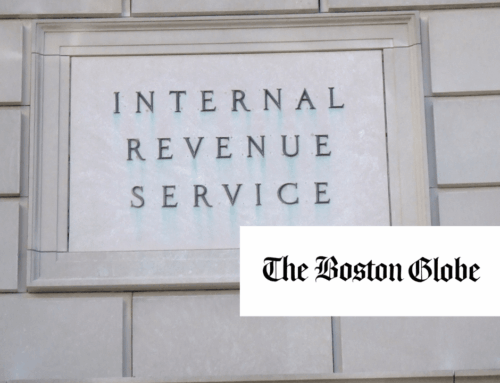At 1:26 AM on Tuesday, March 26, 2024, the crew of the MV Dali issued a distress signal, indicating that they had lost power and could potentially strike the Francis Scott Key Bridge at the mouth of the Port of Baltimore. Within minutes, the ship struck the bridge, causing it to collapse into the Patapsco River, killing several members of a construction crew repairing potholes, severing part of the Baltimore Beltway (Interstate 695), and effectively shutting down the Port of Baltimore. Within hours, federal and state officials assured that the wreckage would be cleared, and the bridge rebuilt, with the federal government covering the costs. Maryland Governor Wes Moore stated at a subsequent press conference, “This work will not take hours. This work will not take days. This work will not just take weeks. We have a very long road ahead of us.” Analysts are conflicted on the timeline and total price tag for the disaster, but it is certain that rebuilding efforts will not be cheap. With cleanup efforts underway, it is crucial for policymakers and observers to understand where these funds will be drawn from as emergency spending is discussed, approved, and distributed in the coming months and years.
The recovery process for this disaster will not be as straightforward or as easy as policymakers and affected residents might hope. Before any reconstruction can begin, the wreckage must be cleared. This involves removing hundreds of thousands of tons of steel and debris from the collapsed bridge and any associated environmental cleanup.
On Thursday, March 28th, the US Department of Transportation released $60 million in Emergency Relief funds to begin debris removal from the river. These funds originated from a fund derived from the Highway Trust Fund (HTF) called the Emergency Relief Program (ERP). The ERP was established by the Federal-Aid Highway Act of 1956, initially funded through a 60% contribution from the HTF and a 40% contribution from the Treasury’s general fund. In 1979, Congress reorganized the program to be solely funded by the HTF, authorizing $100 million annually. This level was made permanent through subsequent legislation, including the Infrastructure Investment and Jobs Act (IIJA). Administered through state departments of transportation, funding becomes available once state officials declare a disaster. The federal government distributes funds to the state after repairs are made and receipts submitted to the Federal Highway Administration (FHWA), which reimburses at the same rate as other federal aid highway facilities, 90% for Interstate System highways and 80% for state highways. In the case of the Key Bridge, despite carrying Interstate 695, the segment across the bridge is actually a state highway and would receive an 80% reimbursement rate.
Under the ERP, there are two types of repairs: Emergency Repairs and Permanent Repairs. Emergency Repairs are designed to quickly “restore essential traffic, to minimize the extent of damage, or to protect the remaining facilities.” Examples include landslide removal, temporary road detours, and alternate transport means, such as a ferry or temporary bridge. These repairs do not require FHWA approval, need not be bid on competitively, and are excluded from requirements under the National Environmental Protection Act. In the event of a complete failure, such as the Key Bridge disaster, funds are classified as Permanent Repairs, which are subject to competitive bidding. As part of the IIJA, ERP funding can now incorporate resilience features to mitigate the risk of recurring damage or future costs from natural disasters. These funds can relocate roads from floodplains, improve drainage systems, and incorporate natural infrastructure to mitigate damage among other proactive measures. While preliminary discussions have considered the cost/benefit potential of installing protective barriers to address the cause of the Key Bridge disaster, it remains unclear whether anything could have structurally prevented a collapse after a direct strike by a drifting cargo ship. Although the ERP officially receives $100 million annually, major disasters like the Key Bridge collapse often require significantly more money, necessitating additional appropriations.
Since 1998, the ERP has received supplemental appropriations from Congress on 19 occasions, six from the HTF and 13 from the General Fund. Those 19 supplemental appropriations resulted in more than $21 billion in additional spending. According to the Congressional Research Service, the $100 million annual appropriation’s relative value has decreased by 86% since its inception, increasingly relying on supplementary funding to meet the fund’s needs. In the last ten fiscal years, annual appropriations have provided only 8.7% of the program’s funding, corresponding with an increase in disaster spending across the federal budget.
President Biden has indicated his intention for the federal government to fully fund the recovery. This would require Congress to authorize the FHWA to cover 100% of the expenses incurred, as has been done on several occasions, such as the Interstate 35W bridge collapse in Minnesota in 2007 and most recently the appropriations for damage caused by Hurricane Fiona in 2023. In the case of the Interstate 35W collapse, the federal government was ultimately able to recoup some of the cost of repairing the bridge, as the successor to the bridge’s designer was found to be liable for some of the damage. Following the East Palestine train derailment and the subsequent environmental consequences, the Environmental Protection Agency (EPA) ordered Norfolk Southern to reimburse the agency for the $1.1 billion cleanup fee incurred after the operation. While Norfolk Southern disputed these charges, they were ultimately required to pay after a federal judge ruled that they were solely responsible for the fees. Indeed, the Key Bridge collapse will likely result in a several year long legal battle to assign liability for the cleanup costs.
Notably, all the major affected assets, including the bridge, ship, and port, were insured. According to an estimate by Morningstar DBRS, a global credit rating agency, insured losses for the bridge, ship, and port could be between 2 and 4 billion dollars. Bruce Carnegie-Brown, chair of Lloyd’s of London, a major shipping insurance group, asses that the collapse could be the “largest ever marine insured loss.” Treasury Secretary Janet Yellen said in an interview that she expects that insurance companies will provide a significant portion of funding, but that the federal government did not want worries about financing to delay reconstruction efforts. Transportation Secretary Buttigieg also reiterated that any responsible party would be held liable for the costs of repairs.
The increasing intensity of natural disasters due to climate change has added to the financial strain on taxpayers to repair and maintain our infrastructure. Catastrophic infrastructure failures like the Key Bridge collapse are incredibly rare. Despite this, smaller scale disasters and damage to infrastructure are becoming more frequent. With increased strain on funding sources, such as the HTF, it remains imperative for Congress to find a sustainable solution for infrastructure disaster funding.











Get Social